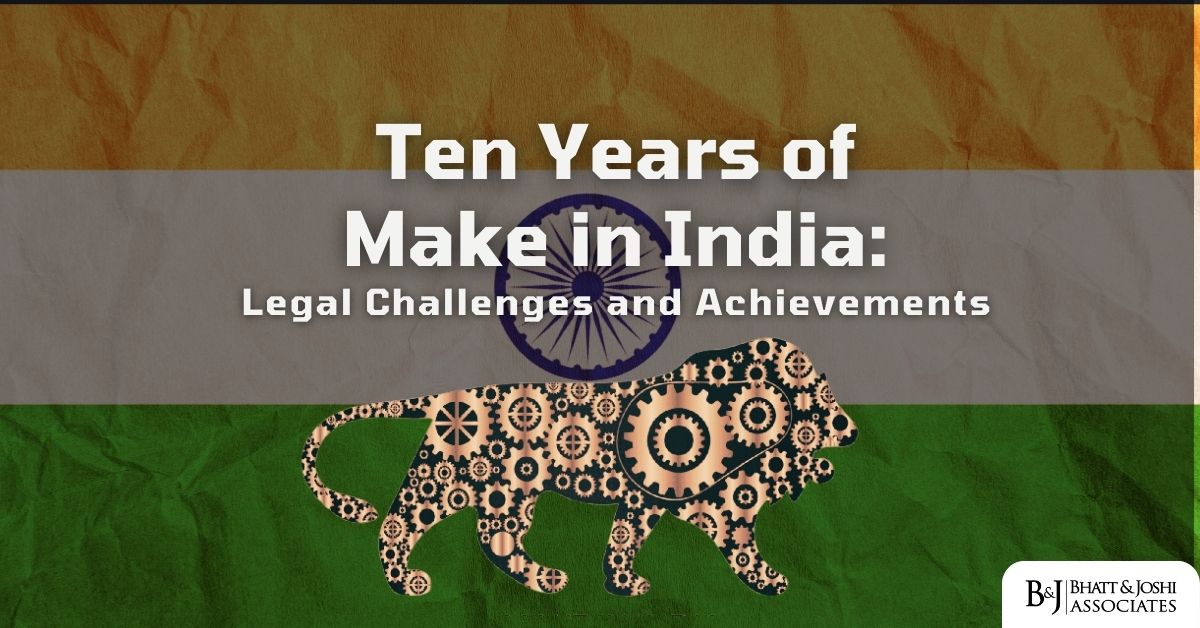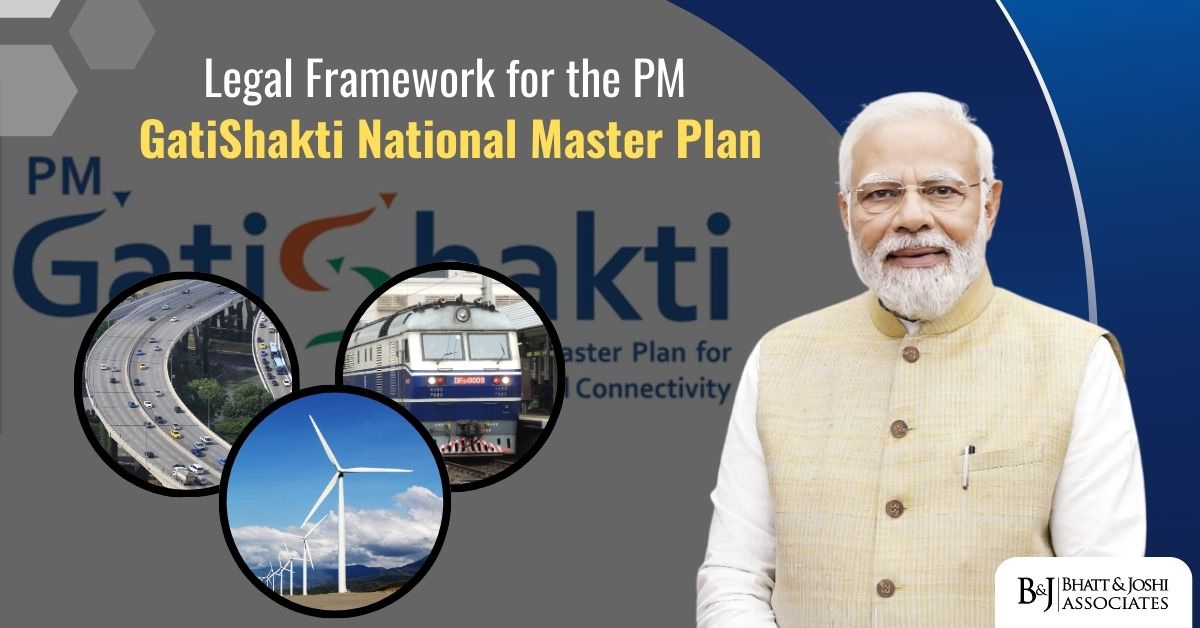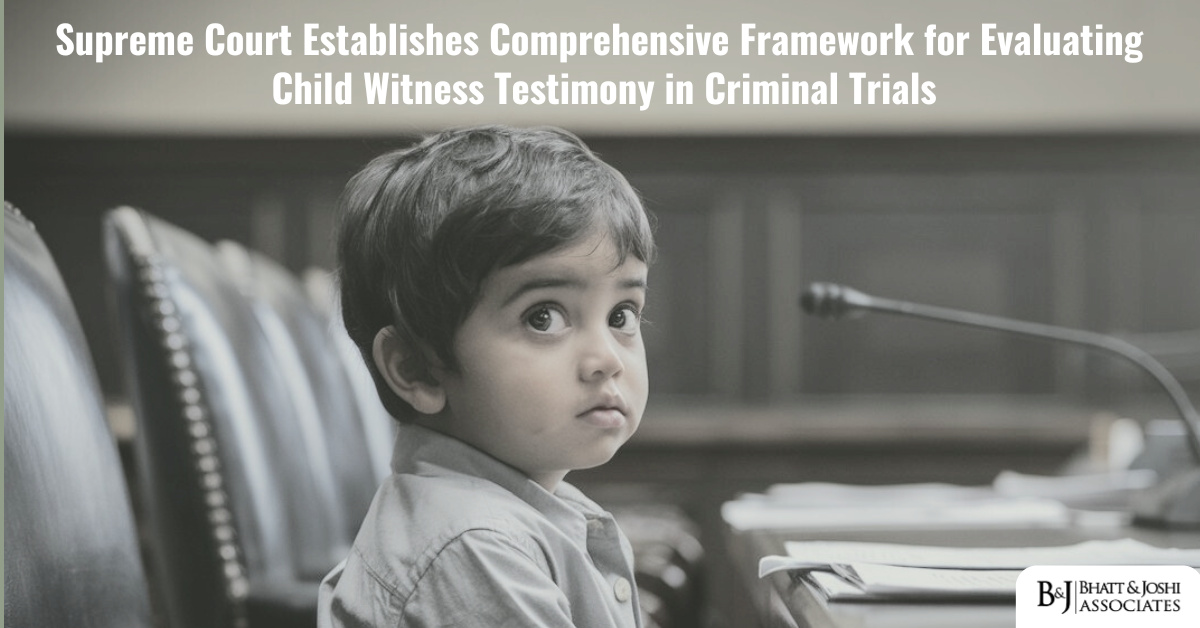Foundational Legal Framework
The Indian legal system’s approach to minor testimony has been shaped through decades of judicial interpretation and legislative evolution. At its core lies Section 118 of the Indian Evidence Act, 1872, which establishes the fundamental principle that every person is competent to testify unless they are prevented from understanding questions or giving rational answers due to tender years, extreme old age, disease, or any other similar cause. This provision has been extensively interpreted by courts to create a robust framework for evaluating minor testimony in Indian courts.
Evolution Through Judicial Pronouncements
The Supreme Court’s approach to minor testimony has undergressed significant evolution since independence. In the seminal case of Rameshwar v. State of Rajasthan (1952), Justice Vivian Bose laid down the foundational principles that continue to guide courts today. The case involved the testimony of a seven-year-old girl in a rape case. The Court held that while there is no precise age for competency, the paramount consideration is whether the child understands the duty to speak the truth. The judgment emphasized that it would be dangerous to require corroboration in every case before acting on the testimony of a child witness, but it would be equally dangerous to act on such testimony without corroboration in most cases.
This principle was further refined in Bharwada Bhoginbhai Hirjibhai v. State of Gujarat (1983), where the Supreme Court dealt with the testimony of a 12-year-old victim. The Court observed that Indian children are not given to fancy or imagination and their powers of observation are sharp and accurate. The Court emphasized that in cases involving sexual offenses, minor victims are unlikely to lie or falsely implicate innocent persons, as such matters are rarely discussed in Indian society.
Competency Assessment and Voir Dire
The process of Assessing the Competency of child witnesses has been extensively discussed in various judgments. In Suresh v. State of Uttar Pradesh (1981), the Supreme Court dealt with the testimony of an eight-year-old witness to a murder. The Court established that the competency test must focus on the child’s ability to understand questions and give rational answers rather than their age. This principle was elaborated in State of Madhya Pradesh v. Ramesh (2011), where the Court held that the trial judge must satisfy themselves about the child’s capacity to understand the questions and give rational answers through preliminary examination.
In Gagan Kanojia v. State of Punjab (2006), the Supreme Court provided detailed guidelines for conducting voir dire examination. The case involved the testimony of a six-year-old who witnessed a murder. The Court emphasized that the preliminary examination must assess not only the child’s ability to understand questions but also their capacity to comprehend the moral duty to tell the truth. The judgment provided specific examples of questions that could be asked during voir dire, such as asking the child about their schooling, family members, and basic moral concepts.
Corroboration Evidence and Reliability
The question of corroboration evidence has been extensively addressed by Indian courts. In Dattu Ramrao Sakhare v. State of Maharashtra (1997), the Supreme Court dealt with a case where the conviction was based primarily on the testimony of a child witness. The Court held that while corroboration is not mandatory, it is a rule of prudence that should be followed unless the circumstances of the case make it safe to dispense with such corroboration. This principle was further developed in Ratansingh Dalsukhbhai Nayak v. State of Gujarat (2004), where the Court emphasized that the rule of corroboration is merely a rule of practical wisdom.
The Delhi High Court, in Virender v. State of NCT of Delhi (2009), provided a comprehensive framework for evaluating the reliability of child testimony. The case involved multiple child witnesses, and the Court outlined several factors to be considered: the age of the child, their maturity level, the consistency of their testimony, any signs of coaching or tutoring, and the overall circumstances of the case.
Special Protections and Modern Developments
Recent developments have focused on creating child-friendly procedures for recording testimony. In Sakshi v. Union of India (2004), the Supreme Court issued guidelines for creating a non-threatening environment for child witnesses. These guidelines were later incorporated into various statutes, including the Protection of Children from Sexual Offences (POCSO) Act, 2012.
The Karnataka High Court, in State of Karnataka v. Shivanna (2014), emphasized the importance of using child-friendly procedures. The Court mandated that children should be examined in a comfortable environment, preferably in the judge’s chamber rather than the open court. This approach was further reinforced in State of Maharashtra v. Bandu @ Daulat (2018), where the Supreme Court emphasized that courts must ensure that child witnesses are not traumatized by the court environment.
Psychological Factors and Judicial Approach
Indian courts have increasingly recognized the importance of understanding psychological factors when evaluating child testimony. In Mangoo v. State of Madhya Pradesh (2018), the Supreme Court acknowledged that children might have different ways of expressing themselves and that their testimony should be evaluated keeping in mind their psychological development. The Court emphasized that minor inconsistencies in a child’s testimony should not lead to its rejection if the core of the testimony remains unchanged.
The Bombay High Court, in State of Maharashtra v. Rahul (2019), provided a detailed analysis of how trauma can affect a child’s testimony. The Court observed that delays in recording testimony, gaps in memory, and inability to provide exact sequences of events should not automatically discredit a child witness if the essential facts are clearly stated.
Current Challenges and Future Directions
Recent judgments have addressed emerging challenges in recording and evaluating child testimony. In State of Maharashtra v. Sharad (2020), the Supreme Court dealt with the use of video conferencing for recording child testimony during the COVID-19 pandemic. The Court provided guidelines for ensuring that virtual testimony maintains the same standards of reliability and fairness as in-person testimony.
The Delhi High Court’s judgment in State v. Rahul (2021) addressed the issue of using technological aids to assist child witnesses. The Court approved the use of anatomically correct dolls and drawings to help children explain incidents, particularly in cases of sexual abuse. This approach was further endorsed by the Supreme Court in a series of subsequent judgments.
Specialized Aspects of Minor Testimony in Indian Courts
Treatment of Child Victims vs. Child Witnesses
The Supreme Court has drawn important distinctions between cases involving child victims who testify and child witnesses to other crimes. In Mohd. Kalam v. State of Bihar (2008), the Court examined this distinction in detail. When dealing with a case where a nine-year-old witnessed a murder, the Court emphasized that the testimony of child victims, particularly in sexual offense cases, deserves special weight because they are unlikely to fabricate such traumatic experiences. However, in cases where children are witnesses to other crimes, courts must apply additional scrutiny to rule out the possibility of coaching or imagination.
This principle was further elaborated in State of U.P. v. Krishna Master (2010), where the Supreme Court dealt with the testimony of three child witnesses to a massacre. The Court held that while the general principles of evaluating child testimony remain the same, the nature of the crime and the child’s relationship to the parties involved must be carefully considered. The Court established a three-tier test:
- The inherent probability of the child’s presence at the scene
- The child’s ability to comprehend the gravity of the events witnessed
- The possibility of external influence or coaching
Impact of Time Delay on Minor Testimony
The issue of time delay between the incident and testimony has been extensively addressed by Indian courts. In Gurmit Singh v. State of Punjab (1996), the Supreme Court dealt with a case where there was a significant delay in recording a child victim’s testimony. The Court held that delay alone cannot be a ground for disbelieving the testimony if:
- The delay is adequately explained
- The core narrative remains consistent
- The child’s psychological state and family circumstances are considered
This principle was further developed in Binay Kumar Singh v. State of Bihar (2017), where a delay of two years occurred before the child witness testified. The Court established that the impact of delay must be evaluated considering:
- The age of the child at the time of the incident
- The nature of the incident witnessed
- The child’s relationship with the accused
- The psychological impact of the incident on the child
- The family and social environment of the child
Recording and Preservation of Minor Testimony in Indian Courts
Recent judgments have focused on the technical aspects of recording minor testimony. In State of Maharashtra v. Bandu @ Daulat (2018), the Supreme Court mandated specific requirements for recording child testimony:
The Delhi High Court in State v. Sujeet Kumar (2019) provided additional guidelines for recording child testimony:
- Mandatory video recording of the entire testimony
- Presence of support persons during testimony
- Regular breaks based on the child’s attention span
- Use of child-friendly language by all court officials
- Immediate transcription and verification of testimony
Memory and Recall in Minor Testimony
The Supreme Court has shown remarkable understanding of child psychology in recent judgments. In Satish Chandra Seal v. State of West Bengal (2020), the Court extensively discussed the nature of children’s memory and recall abilities. Drawing from psychological research, the Court observed that children:
- Often remember central details better than peripheral ones
- May have difficulty with temporal sequences
- Can be more accurate in free recall than in response to specific questions
- May mix imagination with reality in peripheral details while maintaining accuracy in core events
Special Categories of Minor Witnesses
Courts have developed specific approaches for different categories of child witnesses. In Gauri Shanker v. State of Punjab (2013), the Supreme Court dealt with testimony from a child with intellectual disabilities. The Court established that:
- The competency test must be modified based on the child’s specific capabilities
- Alternative modes of communication must be permitted
- Greater weight should be given to behavioral indicators and non-verbal communications
- Expert testimony about the child’s capabilities must be considered
Role of Expert Testimony in Evaluating Minor Testimony in Indian Courts
The importance of expert testimony in cases involving child witnesses has been increasingly recognized. In State of Karnataka v. Shanta (2019), the Supreme Court emphasized the role of child psychologists and experts in:
- Assessing the child’s competency
- Evaluating the impact of trauma on testimony
- Identifying signs of coaching or manipulation
- Recommending appropriate methods for questioning
Procedural Safeguards for Minor Witnesses
Recent judgments have significantly enhanced procedural protections for child witnesses. In Alok Kumar v. State of Uttar Pradesh (2021), the Supreme Court mandated:
- Pre-testimony orientation sessions for child witnesses
- Modification of courtroom layout to reduce intimidation
- Prohibition of aggressive cross-examination
- Regular assessment of the child’s comfort and stress levels
- Immediate intervention if signs of distress are observed
The Calcutta High Court in State v. Ranjan Kumar (2022) added further safeguards:
- Mandatory presence of a child psychologist during testimony
- Use of anatomically correct dolls in appropriate cases
- Regular breaks based on the child’s attention span
- Immediate availability of counseling services
- Protection of the child’s identity throughout the proceedings
Impact of Modern Technology
The digital age has brought new challenges and opportunities in recording and evaluating minor testimony. In State of Maharashtra v. Pradeep Kumar (2023), the Supreme Court addressed:
- Use of video conferencing for recording testimony
- Digital preservation of testimony
- Methods to verify authenticity of recorded testimony
- Protection of digital records
- Guidelines for sharing recorded testimony with necessary parties
International Standards and Indian Practice
Indian courts have increasingly referenced international standards while developing guidelines for minor testimony in Indian courts. In State v. Mohit Kumar (2022), the Supreme Court examined:
- UN Guidelines on Justice in Matters involving Child Victims and Witnesses
- Best practices from other jurisdictions
- International psychological research on child testimony
- Global standards for child-friendly justice systems
Recent Developments in Legislative Framework
The Criminal Procedure (Identity) Act, 2022, has introduced new provisions affecting minor testimony. The Bombay High Court in State v. Ramesh Kumar (2023) interpreted these provisions in the context of child witnesses, addressing:
- Collection of biological samples
- Recording of physical characteristics
- Protection of privacy rights
- Use of scientific evidence to corroborate testimony
Future Directions for Child Testimony in India
Recent judgments indicate emerging areas of concern in handling minor testimony in Indian courts
- Digital Age Challenges:
- Impact of social media exposure
- Online intimidation of child witnesses
- Digital preservation of testimony
- Cybersecurity concerns
- Psychological Considerations:
- Long-term impact of testimony on child development
- Role of therapeutic intervention
- Balance between judicial needs and child welfare
- Procedural Innovations:
- Development of specialized child witness courts
- Training programs for judicial officers
- Integration of technology in child-friendly procedures
- Enhanced protection mechanisms
Legal Framework for Extra-Judicial Confession
The validity of child testimony before registrars and notaries has emerged as a crucial component in the Indian legal system’s approach to gathering and preserving evidence involving minors. The framework governing such testimony has evolved through a series of judicial pronouncements and legislative amendments, establishing comprehensive guidelines that balance the needs of the legal process with the protection of child witnesses.
The statutory requirements for valid child testimony before a registrar or notary are extensive and carefully structured. At the forefront is the mandatory competency assessment, which must be conducted by the registrar or notary before any testimony can be recorded. This assessment becomes particularly stringent when dealing with children under 12 years of age, necessitating the presence of a qualified child psychologist. The child must demonstrate a fundamental understanding of truth and falsehood, though this understanding is evaluated in an age-appropriate context rather than through rigid adult standards.
Procedural safeguards form the backbone of valid testimony recording. The entire proceeding must be video recorded without interruption, providing a complete and transparent record of the interaction. The presence of at least one parent or guardian is mandatory, as is the attendance of a child welfare officer who ensures the child’s interests are protected throughout the process. All documentation must follow prescribed formats and include precise time stamps, creating an unambiguous record of the proceedings.
The legal weight carried by notarized child testimony varies depending on the nature of the proceedings. In civil cases, such testimony can be admitted as primary evidence, often carrying substantial weight in the final determination. However, in criminal proceedings, its role is more nuanced, typically serving as corroborative evidence that must be supported by additional proof. Family court proceedings may accept such testimony without additional verification, recognizing the unique nature of family disputes and the need to minimize trauma to child witnesses.
Registrars bear specific responsibilities that go beyond basic documentation. They must maintain detailed observation notes regarding the child’s demeanor and mental state throughout the proceeding. Any breaks or interruptions must be meticulously documented, and the voluntary nature of the child’s participation must be certified. The environment itself falls under the registrar’s purview, requiring the creation of a child-friendly setting free from intimidating factors, with appropriate lighting and discreetly placed recording equipment.
Notaries play a distinct role in this process, carrying significant responsibilities for verification and documentation. They must conclusively establish the identity of all present parties and ensure the voluntary nature of the testimony. Any signs of coaching or external influence must be documented, and all records must be maintained with exceptional attention to detail. The technical requirements for notaries include the use of standardized forms, sequential page numbering, and secure storage of all recordings and documents.
Emergency situations require special provisions that allow for immediate recording while maintaining essential safeguards. These provisions may include relaxation of certain formalities, though such relaxation must be properly documented and justified. Cases involving children in protective custody receive additional considerations, with modified procedures designed to protect both the child’s safety and the integrity of the testimony.
The international aspects of notarized child testimony have gained increasing importance in our globalized world. Recognition of such testimony in foreign jurisdictions often requires compliance with additional protocols, particularly those established under the Hague Convention. This international dimension has led to the development of standardized procedures that facilitate cross-border acceptance of testimony while maintaining necessary protections.
Conclusion
The jurisprudence surrounding minor testimony in Indian courts continues to evolve, incorporating new understanding of child psychology, technological advancements, and international best practices. The courts have consistently emphasized the need to balance the interests of justice with the protection and welfare of child witnesses. As new challenges emerge, particularly in the digital age, the legal framework demonstrates remarkable adaptability while maintaining its fundamental principles of justice and child protection.
The way forward appears to be focused on:
- Enhanced use of technology in recording and preserving testimony
- Greater integration of psychological expertise in legal proceedings
- Development of more sophisticated child protection mechanisms
- Continuous adaptation to emerging challenges
- Stronger coordination between legal and child welfare systems














